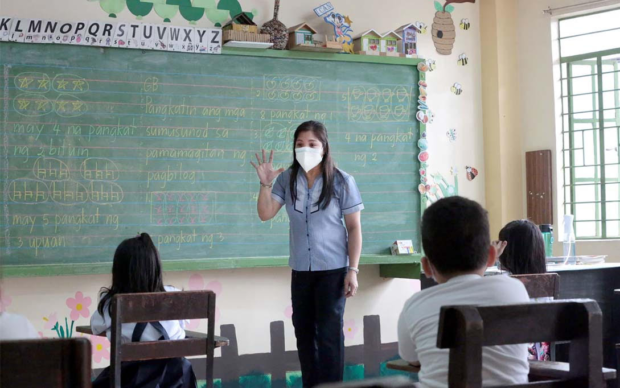Balisacan urges makeup classes, internship

The Department of Education (DepEd) is eyeing the easing of requirements for in-person classes as Metro Manila and other areas shift to a “new normal.”(INQUIRER FILE PHOTO / GRIC C. MONTEGRANDE)
MANILA, Philippines — The country’s chief economist has urged the Department of Education (DepEd) to facilitate makeup classes for younger schoolchildren as well as training for college students to make up for the two years of subpar learning due to the prolonged COVID-19 pandemic.
Socioeconomic Planning Secretary Arsenio Balisacan last week said “a learning catch-up plan is crucial [to] help secure better opportunities for future generations and ensure that our demographic dividend will not be wasted.”
Here in the Philippines, students have been mostly attending online classes, which experts believed were not comparable to in-person schooling, these past two years. The administration of President Marcos plans to revert to 100-percent face-to-face classes by November, or three months after the start of the incoming school year.
Moving forward, learning should be augmented outside the classroom among primary or elementary pupils and secondary or high school students, Balisacan said.
“It could be training, additional work that needs to be done for the kids,” especially in basic math, he noted, adding that the last two years of below-average education would result in human capital losses.
Article continues after this advertisementBalisacan said younger schoolchildren, in particular, were “too far behind” in their learning requirements, hence they should be focused on when they go back to face-to-face classes.
Article continues after this advertisementThink out of the box
For tertiary or college students, catch-up training and internships should be made available, Balisacan said.
Asked if learning catch-up would entail longer school days or shorter breaks, Balisacan replied: “Why not?” [Educational institutions] will have to be imaginative.”
Earlier estimates of the state planning agency National Economic and Development Authority (Neda), which Balisacan heads, showed that for every school year that students did not attend face-to-face cases, a total of P11 trillion in productivity losses would be inflicted during a 40-year period spanning a person’s working life.
The report, titled “The State of Global Learning Poverty: 2022 Update” and published last month by a group of agencies led by the World Bank, recommended a so-called “Rapid” framework to “help children recover lost learning, and to accelerate long-term progress in foundational learning.”
The acronym Rapid meant educators should: reach every child and keep them in school; assess learning levels regularly; prioritize teaching the fundamentals; increase the efficiency of instruction, including through catch-up learning; and develop psychosocial health and well-being.
‘Cutting edge’ study
Meanwhile, an associate professor at the University of the Philippines (UP) said the government must invest in providing better opportunities and job security to researchers and scientists to keep them from leaving the country to pursue graduate studies and careers abroad.
Pia Bagamasbad, director of the UP National Institute of Molecular Biology and Biotechnology, said the main problem in the science and technology workforce was that many students go abroad for more “cutting edge” study or career prospects.
“We want to keep them here but we can’t fault them for trying to leave … we have to provide them with opportunities to stay here and invest in them—we have to give them motivations and reasons to stay,” she said in a recent virtual forum of the National Science and Technology Academy.
While there are about 380 public and private science high schools in the country that can produce an estimated 12,700 science and technology (S&T) graduates every year, academician Reynaldo Vea pointed out that this number did not necessarily turn into researchers, scientists, and engineers (RSEs).
Based on his calculations, he said in the same forum that 110,000 STEM (science, technology, engineering and mathematics) students graduate with a bachelor’s degree in science yearly, but only 1,300 finish their master’s degree and only 122 pursue doctoral degrees.
Of 1,300 estimated master’s degree holders in science, he said only 380 would come from the CODs (centers of development) or COEs (centers of excellence) and students with postgraduate degrees in science would only be 62.
But Allan Bernardo, a professor at De La Salle University, was pessimistic about the capacity of the country to produce such a large number of RSEs in the coming years.
He underscored the performance of the Philippines in the Programme for International Student Assessment (Pisa) 2018 wherein 54 percent of Filipino students scored below level 1 in mathematics, as against the standard of level 2.
RELATED STORY